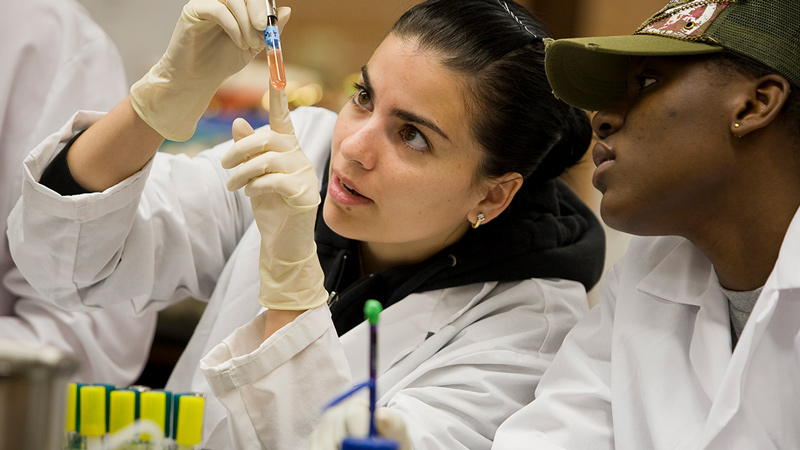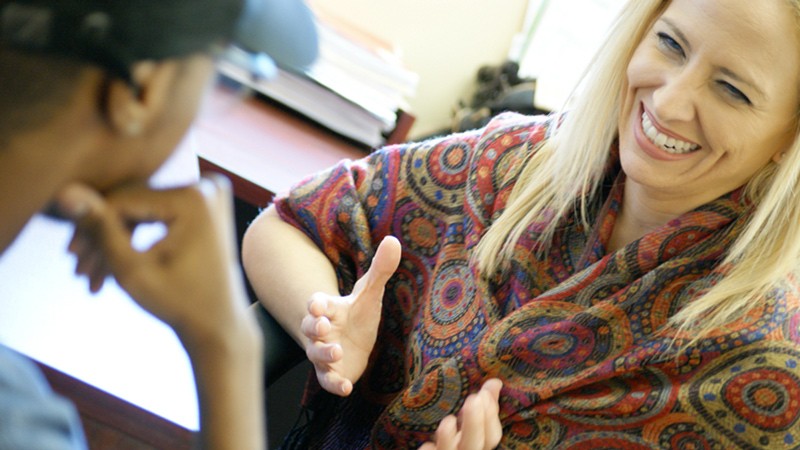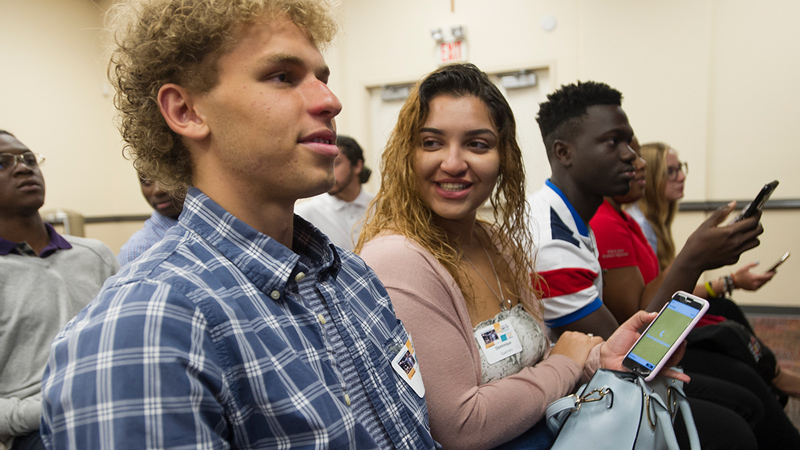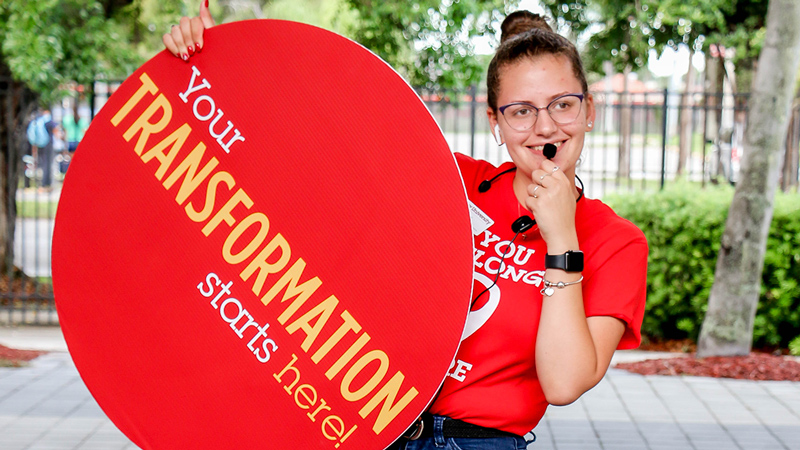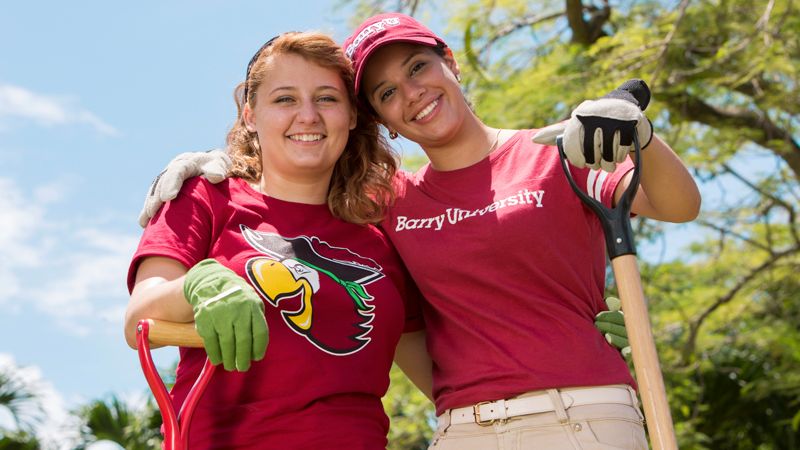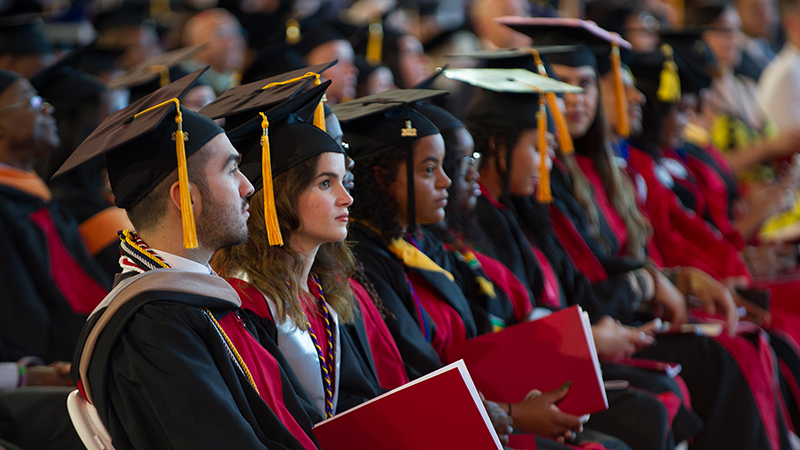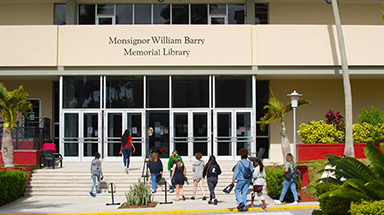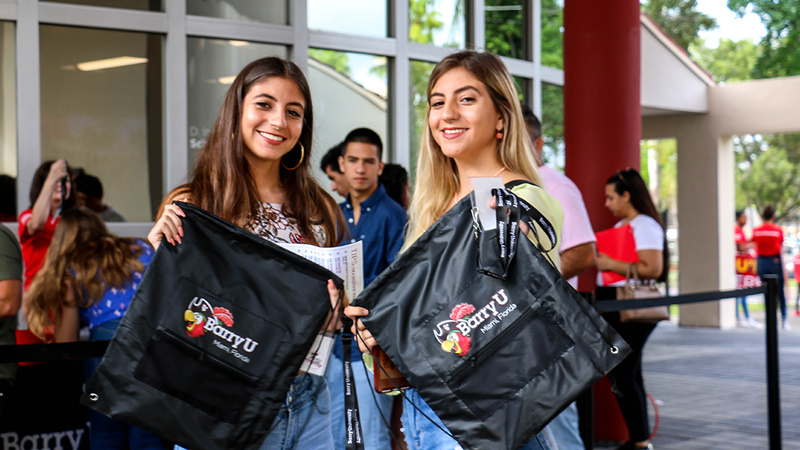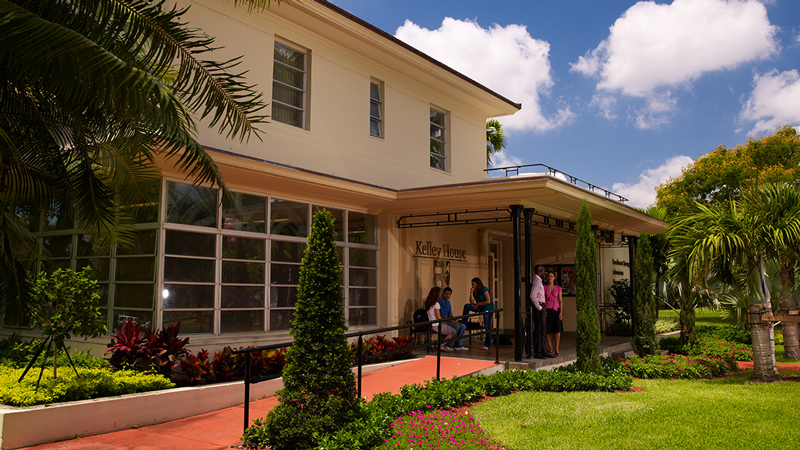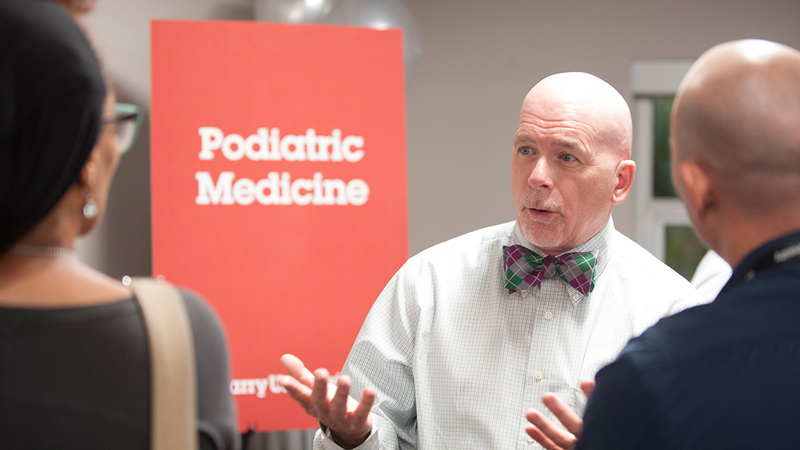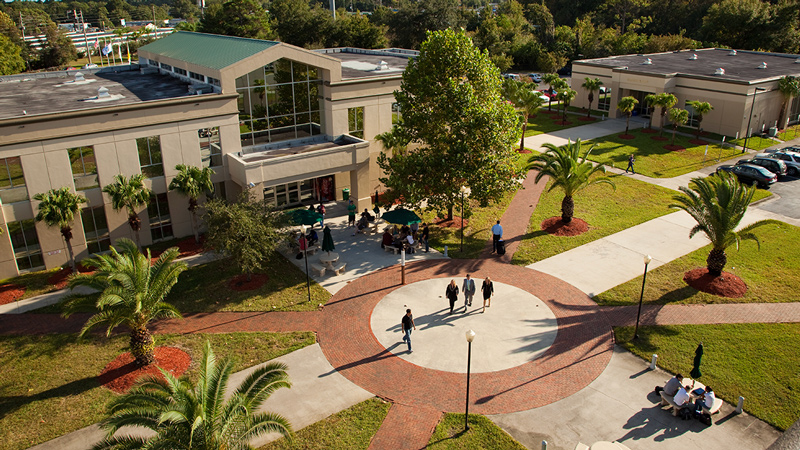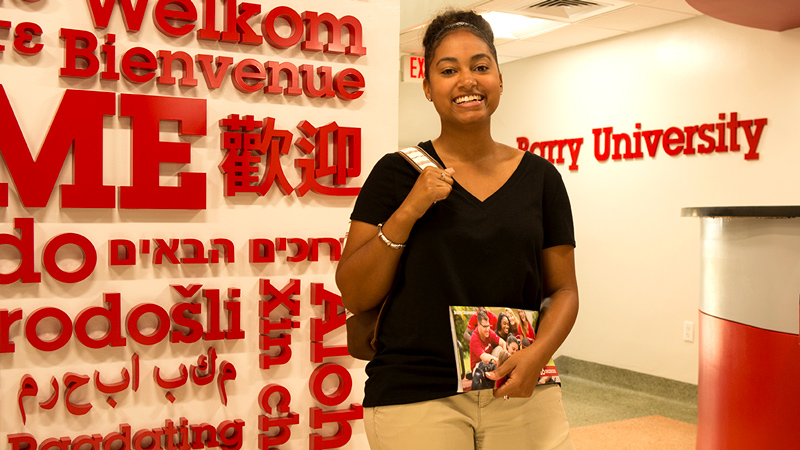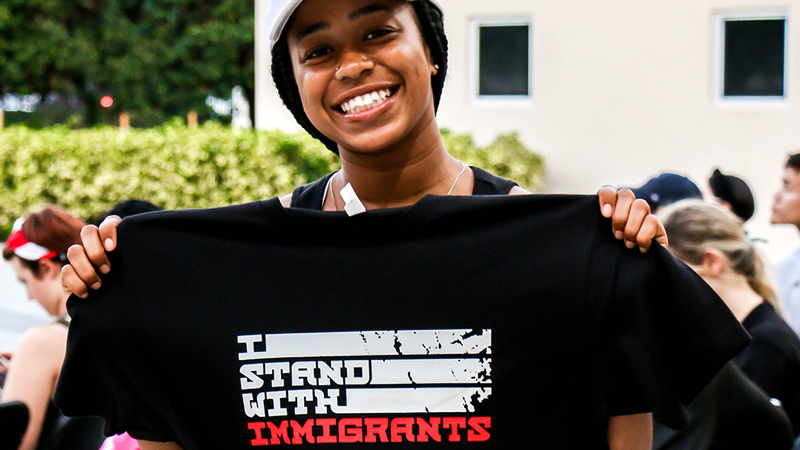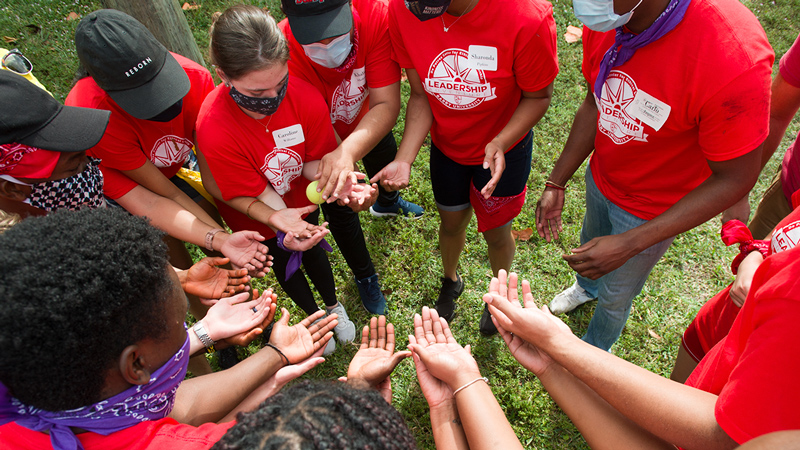I studied that particular case throughout my time at Barry and ended up discovering the cause was a piece of RNA. I never stopped trying to find out how it worked, and my professor and my lab at Barry were both really essential to that foundational training. I am grateful for the support of my professors at Barry who set me on the path of science and entrepreneurship. In my work, I make efforts to mentor students, because I know how fortunate I was to have the support of strong role models in the field.
DM: Help me understand the biology of how RNA impacts our bodies.
MP: We learn in the classroom about the “central dogma” of life: DNA is the material of all cellular organisms; proteins make all of our tissues and allow our body to function; RNA is the message that tells the DNA what types of protein to create, and it is responsible for all of our diversity. After all, you, me, and the common fly all have the same genes, but it is our RNA that differentiates us.
DM: When did you start to work at the intersection of the ideas of artificial intelligence in healthcare?
MP: Questions and stumbling blocks in my research prompted me to turn to AI, then a relatively new technology. As my questions multiplied, I found that technology could help fill in many of those gaps. When I was in graduate school at Cold Spring Harbor Laboratory, it used to take us weeks or months to analyze one genome, and it required huge servers that took up a whole room. Since then, the technology has evolved. Today, at Envisagenics, we can analyze 2,000 patients’ full genomes in under two hours using cloud computing and without any devices larger than a coffee machine.
DM: What was the founding vision of the company? What was the problem that you were trying to solve?
MP: My co-founder, Dr. Martin Akerman, and I started the company with the premise of using RNA therapeutics as the basis and then employing all of this technology—including cloud computing and machine learning—to quickly and accurately identify disease targets. For context, when I first started in the field, we used to design 300 to 500 short pieces of RNA, which were synthesized for about $3,000 to $5,000 apiece. Then we would have to inject each of those into subjects and analyze the results, which took months or even years. Now, we basically put those questions into machine-learning algorithms, and through repetition, we can get those 500 options down to five.
Envisagenics spun out of Cold Spring Harbor Lab. My co-founder, Martin, called me a little while after we graduated and said, “Hey Maria, remember what we were working on back at the lab?” It was a drug for children with spinal muscular atrophy, which is a horrible genetic disorder that makes children’s muscles stop working. Martin said that our professor at Cold Spring Harbor had been receiving hand-written thank-you notes from children who had taken the drug. They were able to write, which meant they had been cured. The treatment, Spinraza®, was created in 2016, and it was the first FDA-approved treatment for this fatal disease. With that idea in mind, we started Envisagenics in 2014. We have partnered with the brilliant scientists at Johnson & Johnson (2020), Biogen (2021), and Bristol Myers Squibb (2022), to name a few, to advance the discovery of treatments for breast cancer, other oncology, and neurodegenerative and metabolic diseases.
DM: Envisagenics is developing its own line of therapeutics and has partnered with other pharmaceutical companies on drug discovery projects. You’ve also raised venture capital funding. What does growth look like for your company? And what excites you about the things this company can do next?
MP: We are a platform company, and we focus that platform on diseases that have RNA errors, like cancer. Cancers affected by RNA include breast, lung, colorectal, and some types of leukemia, and what excites me is using the platform to develop effective therapeutics, either by partnering with pharma to get drugs to patients faster or by using our technology to develop some novel RNA therapeutics ourselves. It’s great to partner with other pharmaceutical companies, but it’s even better to have the vision and create your own.
At the end of the day, the priority is for patients to receive the best therapy available. If we need to partner with a pharma company in order to diversify our chemistry solutions based on the targets that our platform can identify, so be it. It’s about answering the question: How do we get there? The goal is to figure out how we get there efficiently, economically, and with a more personalized diagnostic understanding of the mechanism, and which patients will benefit.
DM: Your role as vice chair for The Alliance for Artificial Intelligence in Healthcare (AAIH) offers you a wide perspective on artificial intelligence and healthcare. What are some of the challenges to adoption that artificial intelligence faces?
MP: What we hear about the most is the hype—that there are still many unknowns with AI as it applies to patients. We also hear the fears— that it is this “black box” that is incomprehensible and unpredictable. I get it. You just don’t want to be cured by something that you don’t understand. But this bias comes from a lack of awareness.
There are certain things that we can do as drug developers that will allow us to break down those negative perceptions of AI and machine learning. Standardization, data quality controls, and policy regulation are becoming more established so people will feel more comfortable with the process as time goes on. But until something that was created with machine learning or AI has been approved and commercialized, you will see doubts.
Even today, we see people questioning how RNA was used to develop the COVID vaccines, even though those vaccines have saved countless lives. I think when it comes to adoption, it will be the same thing for AI. It will require regulators and groups like the AAIH—which includes pharma, academic institutions, venture capitalists, biotechs, and startups—all working together so that we can understand what rules and regulations we should put in place so that people can feel more comfortable with these new therapies.
